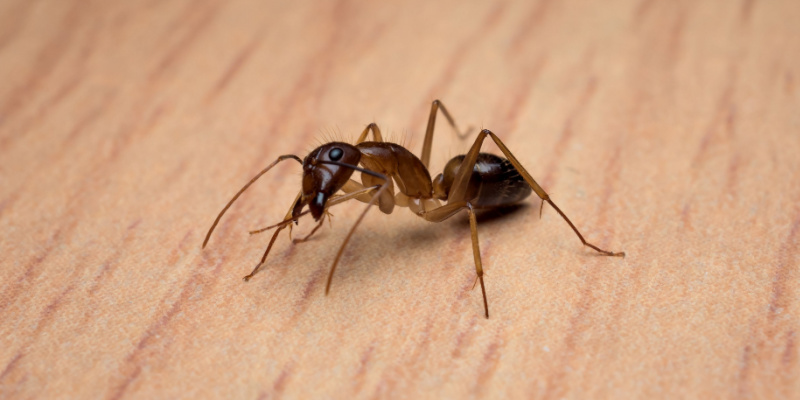Like termites, Carpenter Ants infest the wooden frame, beams, and floor of your home and can cause serious damage. In severe infestations, the structural integrity of your home may be compromised, requiring hundreds or even thousands of dollars worth of repairs. Knowing how to identify a Carpenter Ant problem is essential for protecting your home. Ants are often a pest when they get inside the house, but knowing that a relentless, hard working colony of Carpenter Ants is actively destroying your home can be devastating.
Identifying Carpenter Ants
Carpenter Ants, as well as other non-destructive types of ants, may be seen crawling around your home in search of food. While you should on alert when you see any ant, Carpenter Ants can be distinguished from other ants, and even termites, by:
- Their size: Carpenter Ants are a larger ant and can even be as long as a half of an inch. These ants won’t sneak in your home unnoticed along the grout of your tile or along your baseboards without getting your attention.
- Their color: Common types of Carpenter Ants in the NorthEast of the United States are solid black. While Carpenter Ants can also be half black and half red, or even solid dark brown, the distinctive solid black coloring should immediately alert you that you may have a Carpenter Ant infestation.
- They are distinct from termites. To many people, bugs are just bugs but if you look closely, you will see that ants are very different from termites. While termites have a head, thorax, and abdomen all about the same width, ants have an obvious head and pinched waist.
Carpenter Ants also have elbowed antennae on their heads unlike the straight antennae of a termite.
Signs around the home
Carpenter Ants burrow into the wooden structure of your home, leaving behind evidence of their infestation. A few signs you may notice around your home are:
- Small piles of sawdust: Much like when digging a hole in the ground where you remove dirt from the hole while making a pile of recently excavated dirt in a different place, as the ants chomp and claw through the wood, they have to kick out the sawdust-like wood they have created from their tunnels. They will create a small opening in the wall and shove all the new sawdust out of their tunnels and into your home.
- Highly humid areas in your home: Carpenter Ants do not infest bone dry wood. If you have an area in your home that takes on moisture either from some sort of leak or simply from humidity, you can begin looking for weakening boards in these areas.
- Trail of Carpenter Ants in your home: Because Carpenter Ants do not eat the wood in the tunnels that they make, they will still need a food source. While they may be going outside to find plants to eat or suck up the honey dew produced by aphids, they may also be drawn to drips and crumbs left in your kitchen.
If you see any signs that indicate that you have a Carpenter Ant problem in Passaic County, give our experts a call at Abarb Pest Services today!
